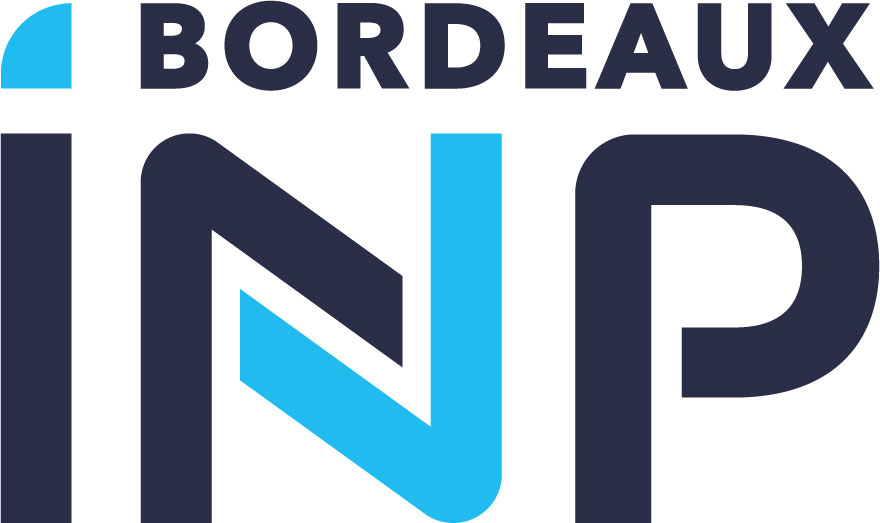IMB > Recherche > Séminaires
Le 14 janvier 2020
à 10:00
Séminaire de Théorie Algorithmique des Nombres
Salle 385
Abdoulaye Maiga IMB
Canonical Lift of Genus 2 Curves
Let $\mathcal{A}/\mathbb{F}_q$ (with $q=p^n$) be an ordinary abelian variety, a classical result due to Lubin, Serre and Tate says that there exists a unique abelian variety $\tilde{\mathcal{A}}$ over $\mathbb{Z}_q$ such that the modulo $p$ reduction of $\tilde{\mathcal{A}}$ is $\mathcal{A}$ and $End(\tilde{\mathcal{A}})\cong End(\mathcal{A})$ as a ring. In 2000 T.Satoh introduced a point-counting algorithm on elliptic curves over $\mathbb{F}_q$ based on canonical lift. In fact the action of the lifted Verschiebung on the tangent space gives Frobenius eigenvalues and hence the characteristic polynomial of the ordinary elliptic curves over $\mathbb{F}_q$. We propose to extend the canonical lift algorithm introduced by T.Satoh to genus 2 curves over finite fields, using the modular polynomials in dimension 2. We first prove the Kronecker condition in dimension 2 case and then succeed to lift the endomorphism ring of $\mathcal{A}$ in dimension 2 case using a general lift algorithm of a $p$-torsion group of an ordinary abelian variety. These results provide an algorithm to compute the characteristic polynomial of a genus 2 curves in quasi-quadratic time complexity.
Le 28 janvier 2020
à 10:00
Séminaire de Théorie Algorithmique des Nombres
Salle 385
Jacques Martinet IMB
Réseaux, variétés abéliennes et courbes
On expliquera d'abord comment la notion de *variété abélienne complexe polarisée* possède une version euclidienne dans laquelle on considère des triplets $(E,\Lambda,v)$ d'un espace euclidien $E$, d'un réseau $\Lambda$ de $E$ et d'un élément $v$ de $\mathrm{GL}(E)$ tel que $v^2=-\mathrm{Id}$ et $v(\Lambda)\subset\Lambda^*$.
Le 4 février 2020
à 10:00
Séminaire de Théorie Algorithmique des Nombres
Salle 385
Aude Le Gluher LORIA
Une approche géométrique efficace pour le calcul d'espaces de Riemann-Roch : Algorithme et Complexité
Le calcul effectif de bases d'espaces de Riemann-Roch intervient dans de nombreux domaines pratiques, notamment pour l'arithmétique dans les jacobiennes de courbes ou dans des codes correcteurs d'erreurs algébraico-géométriques. Nous proposons une variante probabiliste de l'algorithme de Brill et Noether décrit par Goppa pour le calcul d'une base de l'espace de Riemann-Roch $L(D)$ associé à un diviseur $D$ d'une courbe projective plane nodale $C$ sur un corps parfait $k$ suffisamment grand.
Le 11 février 2020
à 10:00
Séminaire de Théorie Algorithmique des Nombres
Salle 385
Raphael Rieu-Helft Université Paris-Sud
How to Get an Efficient yet Verified Arbitrary-Precision Integer Library
We present a fully verified arbitrary-precision integer arithmetic library designed using the Why3 program verifier. It is intended as a verified replacement for the mpn layer of the state-of-the-art GNU Multi-Precision library (GMP).
Le 18 février 2020
à 10:00
Séminaire de Théorie Algorithmique des Nombres
Salle 385
Alex Bartel University of Glasgow
The ray class group of a "random" number field
The Cohen–Lenstra–Martinet heuristics are a probabilistic model for the behaviour of class groups of number fields in natural families. In this talk, I will discuss a generalisation to ray class groups. About 5 years ago, Varma determined the average number of 3-torsion elements in the ray class group of K with respect to m, when m is a fixed rational modulus, and K runs through the family of imaginary quadratic or of real quadratic fields. Since then, Bhargava has been challenging the community to come up with a natural probabilistic model that would explain the numbers obtained by Varma, and to predict more general averages in more general families of number fields. As I will explain in my talk, there turns out to be a very simple-minded way of doing so, and also a much more conceptual one, and they both turn out to be equivalent. The more conceptual one involves an object that does not appear to have been treated in the literature before, but that is very natural: the Aralelov ray class group of a number field. This is joint work with Carlo Pagano.
Le 10 mars 2020
à 10:00
Séminaire de Théorie Algorithmique des Nombres
Salle 385
Florent Jouve IMB
Harmonie et disparités dans le théorème de Chebotarev
Étant donné une extension galoisienne de corps de nombres L/K, le théorème de Chebotarev affirme l'équirépartition des éléments de Frobenius, relatifs aux idéaux premiers non ramifiés, dans les classes de conjugaison de Gal(L/K). On présentera une étude portant sur les variations du terme d'erreur dans le théorème de Chebotarev, lorsque L/K parcourt certaines familles d'extensions. On donnera une formule de transfert pour les fonctions classiques de décompte des nombres (ou idéaux) premiers permettant de ramener la situation à celle d'une extension des rationnels. On exposera enfin quelques conséquences à des problèmes de "type Linnik" et à l'analogue du phénomène de biais de Chebyshev dans les corps de nombres. L'exposé porte sur un travail commun avec D. Fiorilli.
Le 22 septembre 2020
à 10:00
Séminaire de Théorie Algorithmique des Nombres
Online
Nicolas Mascot Trinity College Dublin
Modular Galois representations p-adically using Makdisi's moduli-friendly forms
We will present a p-adic method to compute Galois representations attached to modular forms. This method compares very favourably to the better-known complex-analytic approach. The main ingredient is the use of “moduli-friendly" forms introduced by Makdisi, which allow us to evaluate modular forms at p-adic points of modular curves, and thus to compute in the Jacobian of modular curves without writing down any equations nor q-expansions.
Le 13 octobre 2020
à 10:00
Séminaire de Théorie Algorithmique des Nombres
Online
Christopher Doris Heilbronn Institute and University of Bristol
Computing Galois groups over p-adic fields
We give an overview of the history of computing Galois groups over p-adic fields, with some diversions to recent progress over the rational field. We focus on the "resolvent method," a family of techniques to compute Galois groups, and present a recent algorithm to do this in general over p-adic fields, the first of its kind. This algorithm greatly increases the degree of polynomial that can be routinely handled, and for example has been used to extend existing databases of Galois groups of p-adic fields to include all degree 18, 20 and 22 extensions of the 2-adic field. The implementation and tables of results are available on the speaker's website.
Le 3 novembre 2020
à 10:00
Séminaire de Théorie Algorithmique des Nombres
Online
Samuele Anni Université Aix-Marseille
Isomorphismes de représentations galoisiennes modulaires et graphes
Dans cet exposé, je vais expliquer comment tester efficacement et effectivement si deux représentations galoisiennes modulaires du groupe absolu de Galois des rationnels sont isomorphes. En particulier, je présenterai de nouvelles bornes optimales sur le nombre de traces à tester. Je discuterai également brièvement des graphes des isomorphismes, des résultats associés sur les algèbres de Hecke et de la construction d'une base de données de représentations.
Le 10 novembre 2020
à 10:00
Séminaire de Théorie Algorithmique des Nombres
Online
Raphaël Pagès IMB
Calcul efficace des polynômes caractéristiques des p-courbures d'un opérateur différentiel à coefficients entiers
Nous présentons un nouvel algorithme permettant de calculer les polynômes caractéristiques des $p$-courbures d'un opérateur différentiel à coefficients entiers pour tout $p$ premier inférieur à un entier $N$ donné, en temps quasi-linéaire, donc quasi-optimal, en $N$. L'algorithme présenté se base sur les travaux de A. Bostan, X. Caruso et E. Schost ramenant le calcul de cet invariant au calcul d'une factorielle de matrices, ainsi que sur la technique de calcul de factorielles développée par E. Costa, R. Gerbicz et D. Harvey.
Le 17 novembre 2020
à 10:00
Séminaire de Théorie Algorithmique des Nombres
Online
Fredrik Johansson IMB
Calcium: computing in exact real and complex fields
Calcium is a C library for real and complex numbers in a form suitable for exact algebraic and symbolic computation. Numbers are represented as elements of fields $\mathbb{Q}(a_1,\ldots,a_n)$ where the extension numbers $a_k$ may be algebraic or transcendental. The system combines efficient field arithmetic with automatic construction of fields and ideals of algebraic relations, resulting in a practical computational model of $\mathbb{R}$ and $\mathbb{C}$ in which equality is rigorously decidable for a large class of numbers which includes $\overline{\mathbb{Q}}$ as a subset.
Le 24 novembre 2020
à 10:00
Séminaire de Théorie Algorithmique des Nombres
Online
Anne-Edgar Wilke IMB
Recouvrements optimaux d'ensembles de Siegel tronqués par des boules euclidiennes
Étant donné un groupe algébrique $G$ agissant sur un espace affine $V$, il arrive que l'ensemble $V(\mathbb{Z})/G(\mathbb{Z})$ des orbites entières paramètre des objets arithmétiques et soit donc intéressant à énumérer. Une façon de s'y prendre consiste à expliciter un domaine fondamental de l'action de $G(\mathbb{Z})$ sur $V(\mathbb{R})$ et à y rechercher les points entiers. Pour cela, on peut essayer de recouvrir ce domaine fondamental par une famille de boules euclidiennes de rayon constant dont le cardinal soit du même ordre de grandeur que le nombre de points entiers. Je montrerai comment mettre en œuvre cette stratégie dans le cas simple de l'action à droite de $\mathrm{GL}_n$ sur $\mathrm{M}_n$, dont les orbites entières paramètrent les sous-modules de $\mathbb{Z}^n$, et pour laquelle on dispose de domaines fondamentaux approchés faciles à décrire, à savoir les ensembles de Siegel.
Le 1er décembre 2020
à 10:00
Séminaire de Théorie Algorithmique des Nombres
Online
Tommy Hofmann Saarland University
The conjugacy problem in $mathrm{GL}(n, mathbb{Z})$
We consider the problem of deciding whether two matrices are conjugate. If the coefficient ring is a field, this problem can be easily solved by using the Jordan normal form or the rational canonical form. For more general coefficient rings, the situation becomes increasingly challenging, both from a theoretical and a practical viewpoint. In this talk, we show how the conjugacy problem for integer matrices can be efficiently decided using techniques from group and number theory. This is joint work with Bettina Eick and Eamonn O'Brien.
Le 8 décembre 2020
à 10:00
Séminaire de Théorie Algorithmique des Nombres
Salle 385
Alexandre Bailleul ENS Lyon
Zéros réels de fonctions L d'Artin et biais de Chebyshev dans les corps de nombres
Le biais de Chebyshev est un phénomène qui a été étudié tout d'abord dans le cadre des "courses de nombres premiers" (Rubinstein et Sarnak, 1994) pour expliquer la prédominance apparente des nombres premiers congrus à 3 mod 4 par rapport à ceux qui sont congrus à 1 mod 4. Ces courses de nombres premiers ont été généralisées notamment dans le contexte des corps de nombres par Ng en 2000. Dans des travaux récents, Fiorilli et Jouve ont étudié le biais de Chebyshev dans des familles d'extensions de corps de nombres, et mis en évidence des comportements limites de type "grandes déviations" et "théorème central limite". Dans le travail présenté, je mets en évidence l'influence considérable qu'ont certains zéros réels de fonctions L d'Artin sur le biais de Chebyshev dans des extensions particulières de corps de nombres.
Le 15 décembre 2020
à 10:00
Séminaire de Théorie Algorithmique des Nombres
Online
Elie Eid Université de Rennes
Équations différentielles $p$-adiques pour le calcul d'isogénies en.petite caractéristique
On présente une méthode effective de calcul sur les $p$-adiques d’isogénies entre courbes elliptiques et Jacobiennes de courbes hyperelliptiques de petit genre. Une application importante est le cas des courbes définies sur un corps fini de petite caractéristique, qui peut être résolu par relèvement dans les $p$-adiques. Notre algorithme repose sur la résolution d’équations différentielles avec un bon contrôle de perte de précision. Son analyse est basée sur la théorie de la précision différentielle développée par Caruso, Roe et Vaccon.
Séminaire de Théorie Algorithmique des Nombres
Responsables : Razvan Barbulescu et Wessel Van Woerden
Afficher 2022 - 2021 - 2020 - 2019 - 2018 - 2017 - 2016 - 2015 - antérieurs



